Oracle is stepping up its on-premises cloud offerings and differentiating from its arch-rivals by providing organisations with choice in where their data and applications can reside and to easily move business-critical applications, eventually, to the public cloud.
On Wednesday, the US tech company’s CTO and Chairman Larry Ellison unveiled “Dedicated Region Cloud at Customer”, offering a replica of its entire Oracle Gen 2 cloud running on customer’s data centre, and its autonomous database platform “Exadata Cloud at Customer”.
He said that the autonomous database grew 70% year on year in the fiscal 2020 fourth quarter while the Gen 2 cloud infrastructure grew 140% year on year.
“We announced the world’s first autonomous database in 2018 and it is still the world’s only autonomous database, automates everything and eliminates human labour and human errors,” he said.
Comparing with AWS databases
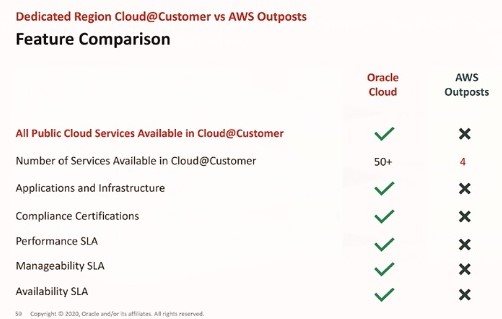
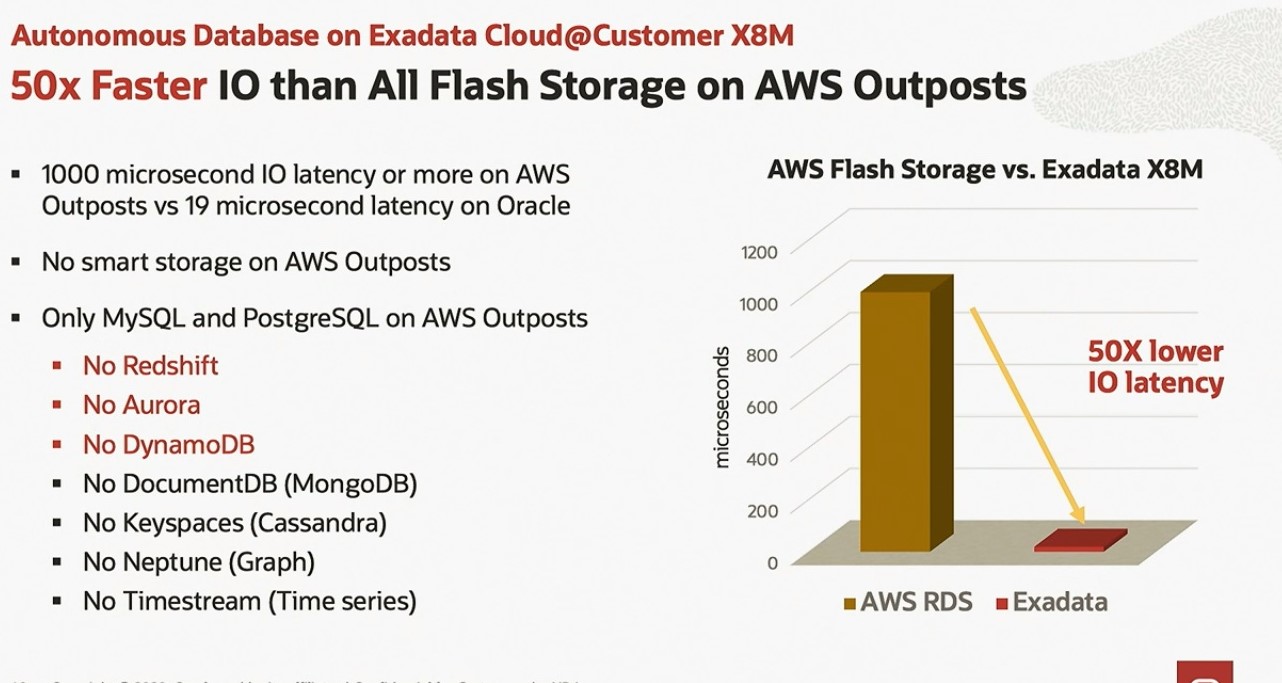
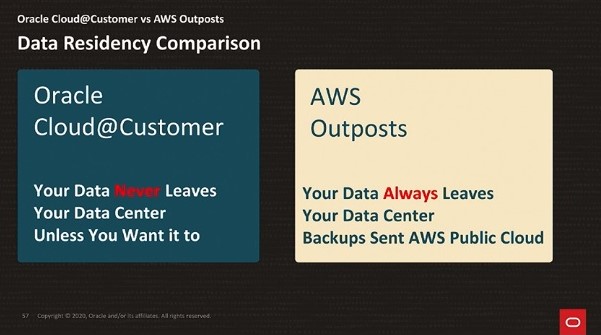
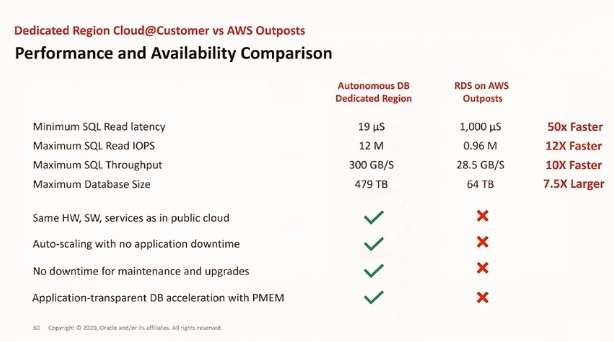
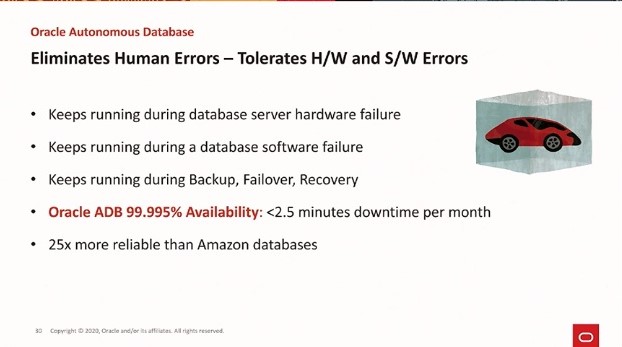
Pointing fingers on AWS, Ellison said that Amazon lost data of 100m Capital One customers.
“It happened because Amazon cloud databases – Aurora, Dynamo, Redshift, RDS, etc. - require complex and manual provisioning, configuration, encryption, backup and security. It is very complicated and human beings can make mistakes and misconfigure systems, leading to data loss. With Oracle, it is 100% automated and users cannot make mistakes on 100% automated processes. It is the only database where a person who runs the database has no access to users’ data,” he said.
With AWS Outposts, he said that users data leaves the data centre every single day for backups to the public cloud.
He added that all of Oracle’s autonomous services, which were available on public cloud, will be available on customer’s data centre and behind a firewall this month.
Moreover, he said that all of its Gen 1 customers get free update to Gen 2 Exadata Cloud at Customer.
The key differences between the Generation 1 and Generation 2 cloud are that Generation 1 cloud places user code and data on the same computer as the cloud control code with shared CPU, memory, and storage, so, the cloud providers can see user’s data while Generation 2 cloud puts customer code, data, and resources on a bare-metal computer, while cloud control code lives on a separate computer with a different architecture.
Bridging the gap

Steve Daheb, Senior Vice-President for Cloud and PaaS at Oracle, said, that enterprise adoption of public cloud, over the past few years, has gone mainstream as companies took advantage of the pay-as-you-go economics, scale and agility of cloud computing.
However, he said that there is a strong demand from customers for a hybrid architecture where the same services, same functionality and easy portability of applications exists between their public and on-premises cloud environments but, so far, no solution was able to bridge the gap between cloud and on-premises environments.
“Industry is experiencing different realities and economic uncertainty. So, we sense urgency to the cloud stronger than we had been into this business. At the same time, some customers haven’t been able to move to the public cloud due to data sovereignty, industry regulations, security, performance and latency issues. We are addressing these issues,” Daheb said.
Moreover, he said that only Oracle is bringing a higher percentage of cloud services to the customer’s data centre in a fully managed cloud region with second-generation cloud architecture.
“Oracle provides more than 50 public cloud services on to a customer’s data centre while AWS offers only four services,” he said.
Offering more SLAs than others
“We have seen an extremely strong momentum around Autonomous Database adoption in our public cloud (allowing the database to be self-driving, self-securing and self-repairing to drastically reduce operational cost and increase efficiency/security). For customers who can’t adopt public cloud, we are now making these capabilities available on our Exadata Cloud at Customer offering,” he said.
With Oracle Autonomous Database on Exadata Cloud at Customer, Daheb said that organisations can work with up to 7x larger databases, achieve greater database consolidation, and improve performance with up to 12x more SQL IOPS, 10x more SQL throughput and 98% lower SQL latency than RDS on AWS Outposts.
Oracle has been offering “Cloud at Customer” for the past many years but it is “Exadata Cloud at Customer” and allows customers to adopt Exadata as a service (same as in the public cloud), as a subscription, running inside a customer’s data centre, fully managed by Oracle.
Regis Louis, Vice-President for Technology Strategy at Oracle EMEA, said that Exadata Cloud at Customer allows adoption of Exadata cloud service inside customer’s data centre for database consolidation and automation.
“Dedicated Region Cloud at Customer is a replica of our commercial Gen 2 cloud data centre built inside a customer’s data centre with the same architecture, offering all the same services, same SLAs and same operating model.
“It allows customers who can’t adopt public cloud (for compliance or technical reasons) to get all the benefits of cloud computing (automation, agility, scalability, pay per use, operational cost reduction, etc.) running from their own data centre, fully managed by Oracle,” he said.
All the services available in the public cloud are made available in a Dedicated Region Cloud at Customer (SaaS, PaS, IaaS), including Exadata Cloud service and Autonomous Database.

New direction for public cloud providers
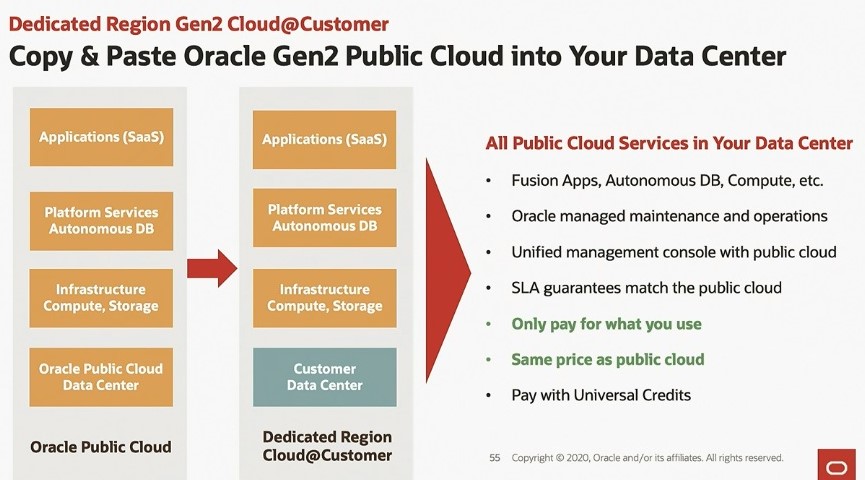
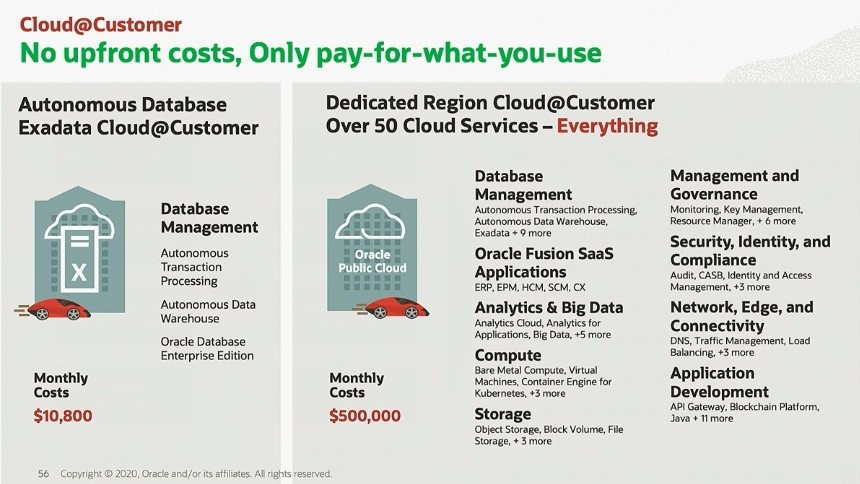
Oracle is targeting customers who don’t have a data centre in the country such as public sectors as well as customers who have industry regulations and data sovereignty issues such as banking and finance, insurance, retail, telcos and healthcare sectors.
“Every cloud vendor has understood the needs of a customer but if you compare AWS Outposts with Dedicated Region Cloud at Customer, it is different and unique to Oracle. In the case of AWS and Microsoft Azure Stack, they only provide a fraction of public cloud services [in single digits] to a customer’s data centre,” Louis said.
“The other uniqueness is having the same SLAs such as availability, network performance, storage performance and manageability as in the public cloud. AWS does not provide any SLAs on availability, performance and manageability. We are the only cloud vendor to do so,” he said.
Moreover, he said that customers only pay for the services they consume using the same predictable low pricing offered in Oracle’s public cloud regions while in Amazon, it is pay per rack and in Azure; customers need to purchase their own hardware apart from the stack.
“Dedicated Region Cloud at Customer represents a new direction for public cloud providers, who have historically offered only limited versions of their services to customer premises, with no changes in pricing or capabilities,” Deepak Mohan, Research Director at International Data Corporation, said.
Oracle has already signed two customers - Nomura Research Institute (NRI) in Japan and Oman Information Technology and Communications Group - for Dedicated Region Cloud at Customer and Credit Agricole, Entel, Samsung SDS, NTT DoCoMo and four Saudi Arabian entities (General Authority of Civil Aviation (GACA), Saudi Payments, Tawuniya Insurance Company and Sejel Technology) for Autonomous Database on Exadata Cloud at Customer.
Ellison said that Oracle has 24 cloud regions around the world as of July, identical to what AWS has but a year from now, it will have 36 Gen 2 public cloud regions around the world versus AWS’s 27. A cloud region has two data centres.

0 comments:
Post a Comment